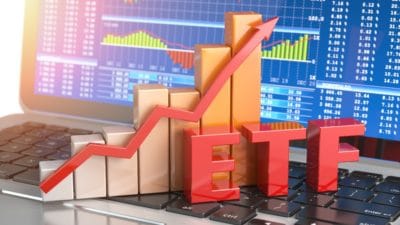How do you know if you should buy a stock? You need to look at many factors, but one helpful metric is a stock’s P/E ratio. P/E ratios are one of the most widely used benchmarks for determining a company’s value.
What is a P/E ratio?
In this ratio, P stands for the stock’s price (what it is currently selling for) and the E stands for earnings per share. This shows a direct relationship between a company’s earnings and how much you are paying for that company.
To determine your ratio, divide the price by the earnings. You can do this calculation yourself, but any investor website that lists stock information, such as Google Finance, will list a company’s P/E ratio. The higher the P/E ratio, the more you pay or the company’s earnings. A high ratio essentially means you are paying a premium for that stock’s earnings. So, theoretically, the lower a P/E, the better.
There are two basic P/E ratios: trailing and forward. The trailing P/E looks at the last 12 months of earnings for a company, so it is dealing with facts. The forward P/E looks at projections about what the next 12 months of earnings for a company might look like. Because the forward P/E is based on speculation, the trailing P/E is considered the more reliable gauge.
Let’s look at the trailing and forward P/E ratios of a couple of popular stocks, starting with Enbridge Inc. (TSX:ENB)(NYSE:ENB). Enbridge’s trailing P/E is 36.25, meaning the price is 36.25 times the company’s earnings. This number is high. The forward P/E for Enbridge is 24.44, so analysts expect earnings to look better compared to the stock price over the next year. There is no guarantee they are right.
Toronto-Dominion Bank (TSX:TD)(NYSE:TD) currently has a trailing P/E of 12.78 and a forward P/E of 12.08. This means you would pay less of a premium for TD’s earnings than those of Enbridge. Analysts also expect earnings to look a little better compared to TD’s stock price over the next year.
What do these numbers mean for you as an investor?
Does a high P/E ratio mean you should avoid a stock? No. Sometimes companies have high P/E ratios because investors bid up the stock. This means they expect earnings to rise in the future, so they are willing to pay now for those possible increases. Of course, if these investors are wrong and earnings don’t rise, the stock price could fall.
You should also compare a company’s P/E ratio to the market as a whole and within its own industry. In some industries, most players might have high P/E ratios. If you see a company with a high P/E and most of the other industry players how low P/E ratios, then you might want to think twice about making the investment.
A low P/E ratio is also not a guarantee of a good buy. You want to look at multiple other factors, such as revenues and profits, to help you decide if you should buy a stock.
One last thing to watch out for is a company with no P/E ratio at all. That usually means the company has reported no earnings. This can happen with newer companies. It doesn’t necessarily make these companies bad bets, but it certainly makes them speculative investments.
Investor takeaway
Any smart investor will research a potential stock before buying it. P/E ratios are just one number that can help you decide if you’ve found a good buy. If you are looking at a stock with a high P/E ratio, make sure it has other solid numbers before you purchase it.







